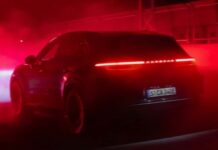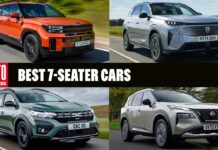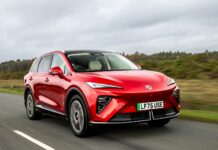China’s passenger car market in October 2025 presented a clear divide: established fuel-vehicle brands battling with price cuts, while new energy vehicle (NEV) manufacturers focused on technological advancements. Despite continued high consumer interest, the market is diverging as policy incentives expire, forcing automakers to adapt. This split is critical because it reflects a fundamental shift in consumer priorities and the future direction of the Chinese auto industry.
Fuel Vehicle Brands Under Pressure
Traditional automakers responded to NEV competition by slashing prices and releasing special editions. FAW-Volkswagen celebrated its 30-million-unit milestone with a limited-edition Magotan, while SAIC-Volkswagen prepared the Lavida Pro for a November launch with updated features. Luxury brands also joined the price war, with Cadillac reducing CT6 prices by 80,000 yuan and Lexus offering a special ES200 version. GAC Honda further intensified competition with temporary discounts on the Accord. These moves demonstrate that fuel-vehicle brands are increasingly reliant on short-term sales tactics to maintain market share.
NEV Brands Drive Innovation
In contrast, NEV brands prioritized technology upgrades and cost optimization. Tesla’s Model Y remained a market leader, while Leapmotor unveiled the D19, a six-seat SUV with a 1,000V platform and up to 1,500 km range. Denza launched the N8L, a 5.2-meter SUV with advanced features and standard configurations. These launches highlight a strategic focus on long-term growth through innovation rather than immediate price reductions.
Market Segment Dynamics
- SUVs: Tesla Model Y, Fangchengbao Ti7, and Audi Q5L led in consumer attention. New models like Leapmotor D19 and Denza N8L intensified competition.
- MPVs: Toyota Sienna, Dongfeng Forthing U-Tour V9, and Buick GL8 remained top choices. Wey Gaoshan 7 and GAC Trumpchi M8 Zongshi Edition entered the segment with advanced features and hybrid systems.
- Entry-Level EVs: BYD’s Qin L DM-i and Deepal Shenlan S05 520 Lite targeted budget-conscious buyers with updated features and competitive pricing.
Sales and Penetration
Retail passenger car sales in October reached 2.242 million, down 0.8% year-on-year. However, NEV penetration stood at 57.2%, indicating a strong shift towards electric vehicles. Despite aggressive product launches, dealership inventory pressure remained, and price competition intensified across segments.
The key takeaway is that the Chinese auto market is undergoing a structural transformation. Fuel-vehicle brands are fighting to defend market share with price cuts, while NEV brands are driving innovation and growth through technology. This divergence suggests that the future of the Chinese auto industry will be defined by electrification and advanced technology.























